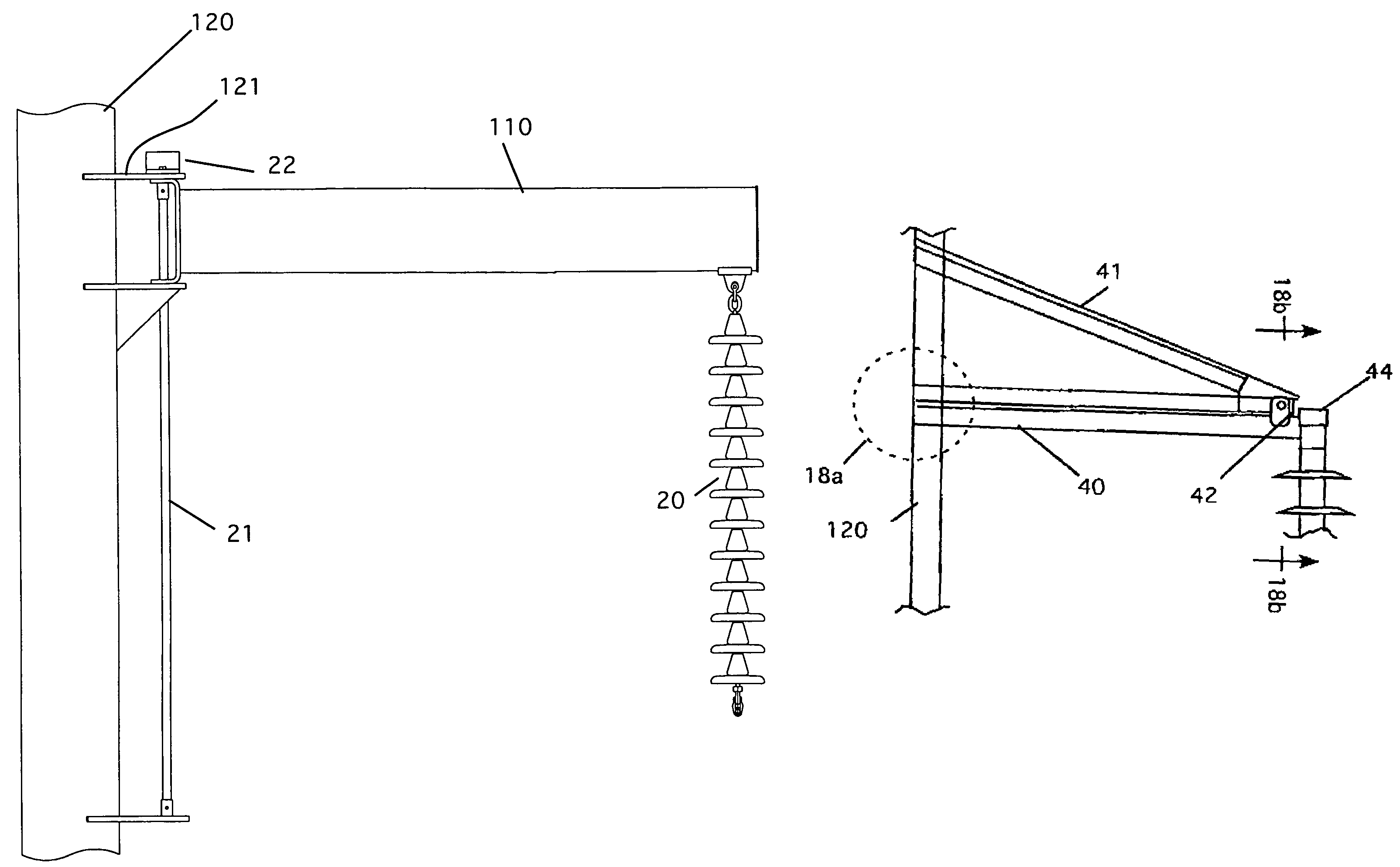Transmission tower devices for reducing longitudinal shock loads
a technology of transceiving towers and shock loads, which is applied in the direction of devices for damping mechanical oscillations, maintaining the distance between parallel conductors, electric cable installations, etc., can solve the problems of increasing the dynamic increasing the and continuing the progressive collapse of large numbers of structures. , to achieve the effect of reducing the peak impact load of the tower
- Summary
- Abstract
- Description
- Claims
- Application Information
AI Technical Summary
Benefits of technology
Problems solved by technology
Method used
Image
Examples
Embodiment Construction
[0067]In the following description, numerous specific details are set forth to provide a thorough understanding of the invention. However, it is understood that the invention may be practiced without these specific details. In other instances, well-known structures and techniques have not been described or shown in detail in order not to obscure the invention.
[0068]The present invention provides means for reducing the peak loads on transmission towers due to broken wires and other disturbances to the wire tensioning system.
[0069]FIG. 1 is a schematic perspective view illustrating a typical section of H-frame transmission tower line 100 as prior art. The line 100 is made up of a deadend tower 101 and H-frame tangent structures 102. Conductors 103 are suspended by string insulators 104. At the top of the structures is a shield or static wire 105.
[0070]FIGS. 2 and 3 are front and side views, respectively, illustrating a typical 230 kV porcelain suspension (“I-String”) insulator assembl...
PUM
 Login to View More
Login to View More Abstract
Description
Claims
Application Information
 Login to View More
Login to View More - R&D
- Intellectual Property
- Life Sciences
- Materials
- Tech Scout
- Unparalleled Data Quality
- Higher Quality Content
- 60% Fewer Hallucinations
Browse by: Latest US Patents, China's latest patents, Technical Efficacy Thesaurus, Application Domain, Technology Topic, Popular Technical Reports.
© 2025 PatSnap. All rights reserved.Legal|Privacy policy|Modern Slavery Act Transparency Statement|Sitemap|About US| Contact US: help@patsnap.com



